New Zealand Shipping Company - MS Rangitiki
Please Note: Firefox and some other search engines are not
suitable – Use “Internet
Explorer” for this page to load perfectly!
Click the logo above to reach
the ssMaritime FrontPage for News Updates & “Ship of the Month”
With Reuben
Goossens
Maritime Historian, Cruise‘n’Ship
Reviewer, Author & Maritime Lecturer
Please Note: All ssMaritime and other related maritime/cruise sites are 100%
non-commercial and privately owned. Be assured that I am NOT associated with
any shipping or cruise companies or any travel/cruise agencies or any other
organisations! Although the author has been in the passenger shipping industry
since 1960, although is now retired but having completed around 690 Classic Liners and Cargo-Passengers Ships features I
trust these will continue to provide classic ship enthusiasts the
information the are seeking, but above all a great deal of pleasure! Reuben
Goossens.
New Zealand Shipping Company
MS Rangitiki
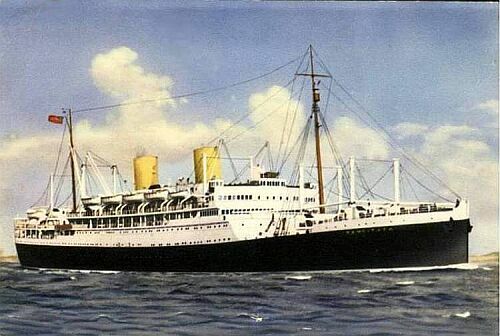
One
of the three 1929 "Rangi" Sisters
From the author’s private collection
To break the stranglehold that
Shaw Savill Line and the Albion companies had on the
This feature will highlight seven
of the latter ships (1929 – 1967) of the NZSC liners, the five
“Rangi” ships, as well as the Ruahine and the last ship of the
fleet, the ex Cunard liner Parthia, renamed Remuera.
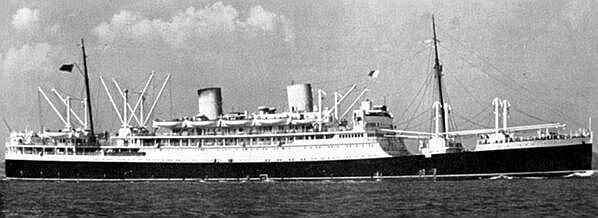
MS
Rangitata
During the war Rangitane (1)
and several other NZSC ships were lost, however, the Rangitane’s sisters,
Rangitiki and Rangitata having carried
thousands of British and American servicemen during the Second World War, survived and were returned service in 1949. In
that same year, NZSC ordered two new “Rangi” ships, Rangitoto and Rangitane, which would
replace the ships lost. Three years later another, slightly smaller ship was
ordered, being the companies last new-built passenger liner, the Ruahine. These new
ships together with the two original “Rangi” ships maintained a
regular passenger cargo service between
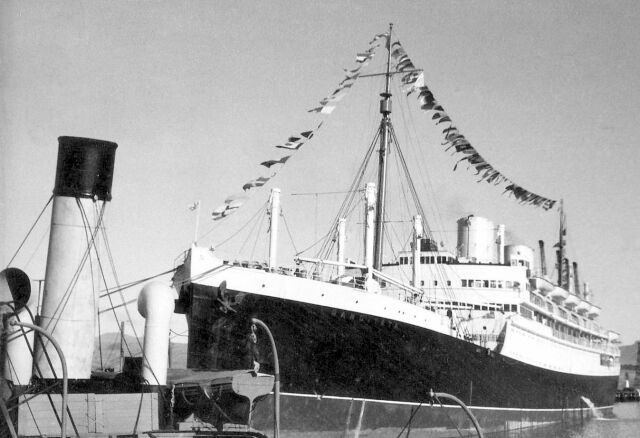
MS Rangitata arrives at Lyttelton during her last
visit to the port
The reason she is fully dressed (with flags) is that
it was the Queen's Birthday weekend in 1961
Photograph by & © Dave Edge -
I have been asked, “What
was so special about these ships”? They offered an excellent service,
with simple understated luxury and comforts. This was combined with old
fashioned service and typical British fare. Obviously, they could net be
compared with the luxury of passenger ships of today, but, then our needs were
simple and a voyage, let’s say on the Rangitoto was a special event and a
joyful experience. For those of my age, I am sure the many photographs
contained in this feature will bring back memories of a time when ships were
ships. For our younger readers, these ships will reveal their fascinating
lines, the usefulness of their day transporting passengers in comfort, whilst
also carrying general and frozen cargo from one end of the world to another.
Passengers would look on with fascination as cargo was loaded into the holds.
Those days there were no containers, everything was loaded by cranes, lifting
pallets and nets. These were working ships, genuine liners that offered
transport to and from ports in total comfort.
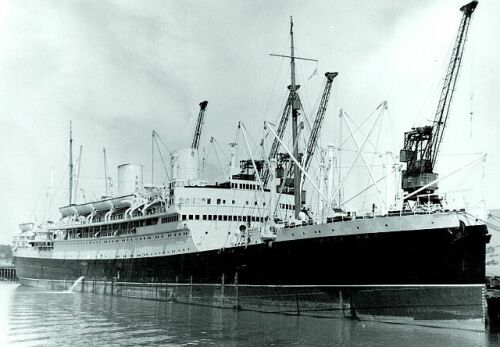
In 1925 NZSC ordered three
“Rangi” ships to be built by John Brown and Co
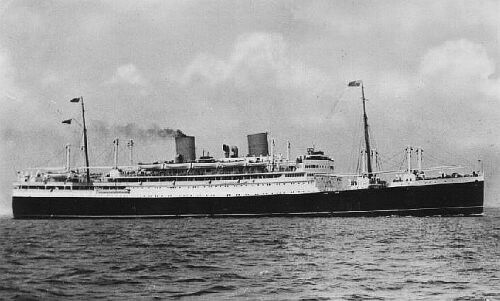
And
her sister the MS Rangitata
The first of the trio, Rangitiki,
departed Southampton on February 15, 1929, on her maiden voyage to
Dimensions
Built: John Brown and
Co., Glasgow
Rangitiki
Launched: 29 August 1928
Tonnage: 16,985
Rangitata
Launched: 26 March 1929
Tonnage: 16,929
Length: 552ft – 168.2m
Width: 70ft – 21.3.
Draft: 34.1ft –
10.4m
Engines: Brown-Sulzer –
later Doxford type diesels
Propellers: Two
Service
speed: 15 – later
16 knots
Passengers: 100 first / 80 second /
400 third. Later: 122 first / 284 tourist
Passenger
Decks: 6
Crew: Approximately 350
Livery: Black hull, white
superstructure, red boot-topping & yellow funnel
Service: London-Curacao-Panama-Papeete-Wellington-Auckland
In July, 1930 a little
over one year into her long career, Rangitata was in the news having rescued
the crew of the cargo ship Targis, which had caught fire in the
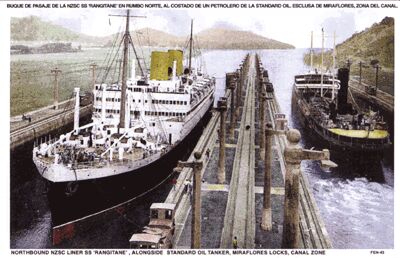
Photo by © Simplon - Visit www.simplonpc.co.uk
Built: John Brown and
Co., Glasgow
Launched: 27 may 1929
Tonnage: 16,712
Length: 552ft – 168.2m
Width: 70ft
– 21.3.
Draft: 34.1ft
– 10.4m
Engines: Brown-Sulzer
diesels
Propellers: Two
Service
speed: 15 knots
Passengers: 100 first / 80 second /
400 third.
Passenger
Decks: 6
Crew: Approximately 350
Livery: Black hull, white
superstructure, red boot-topping & yellow funnel
Service: London-Curacao-Panama-Papeete-Wellington-Auckland
In late November 1940, Rangitane
sailed for the
Page Three… Photo
Album 1 …
Page Four… Photo
Album 2 …
Page Five… Photo Album 3 …
Page Six… Photo Album 4 …
***************************
“Blue Water Liners sailing to the
distant shores.
I watched them come, I watched them go and I watched them die.”
Visit our ssMaritime Main INDEX
Where you will discover around 1,300 Classic
Passenger & Passenger-Cargo Liners!
ssMaritime.com & ssMaritime.net
Where the ships of the past make history & the 1914 built MV Doulos Story
Please Note: ssmaritime and associated sites are 100%
non-commercial and the author does not seek funding or favours and never have
and never will.
Photographs
on ssmaritime and associate pages are either by the author
or from the author’s private collection. In addition there are some
images and photographs that have been provided by Shipping Companies or private
photographers or collectors. Credit is given to all contributors, however, there
are some photographs provided to me without details regarding the photographer
or owner concerned. Therefore, I hereby invite if owners of these images would
be so kind to make them-selves known to me (my email address can be found at
the bottom of the page on www.ssmaritime.com), in order that due credit may be given.
ssMaritime is
owned & © Copyright by
